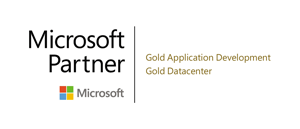Microsoft SCOM Challenges
and How to Overcome Them
A Microsoft System Center Operations Manager Compendium by NiCE
Introduction
As a Microsoft System Center Operations Manager (SCOM) administrator, several challenges might be encountered in managing and maintaining this complex monitoring and management tool. These challenges can vary depending on the organization’s size, infrastructure, and specific requirements. Here are some of the common challenges faced by SCOM administrators:
1. Integration with Hybrid and Cloud Environments
As organizations increasingly adopt hybrid and multi-cloud infrastructures, SCOM administrators may face challenges in integrating SCOM with these environments to monitor both on-premises and cloud-based resources effectively. Ensuring seamless monitoring across these diverse environments can be complex. Preview PDF | Download PDF
2. Scaling for Large Environments
SCOM may be deployed in organizations with large and complex IT infrastructures. Administering SCOM at scale, managing a high volume of agents and data, and maintaining optimal performance can be challenging. Preview PDF | Download PDF
3. Security and Compliance Monitoring
With the growing importance of security and compliance, SCOM administrators may need to enhance their monitoring capabilities to address security threats and ensure compliance with industry standards and regulations. Preview PDF | Download PDF
4. Application Performance Monitoring
Modern applications often consist of distributed and containerized components. SCOM administrators may face challenges in monitoring the performance and health of these complex applications and microservices. Preview PDF | Download PDF
5. Alert Management and Noise Reduction
Dealing with alert fatigue remains a challenge. SCOM administrators need to fine-tune monitoring rules and alerts to reduce noise and focus on critical issues, ensuring that the team doesn’t get overwhelmed by non-essential alerts. Preview PDF | Download PDF
6. Automation and Remediation
Automating routine tasks and implementing automated remediation processes can be challenging yet essential for efficient operations. Integrating SCOM with automation tools and orchestrators is often necessary. Preview PDF | Download PDF
7. Customization and Reporting
Organizations have unique monitoring needs, and SCOM administrators may need to create custom management packs, dashboards, and reports to address these requirements effectively. Preview PDF | Download PDF
8. Knowledge and Skill Gaps
Keeping up with the latest features and capabilities of SCOM, as well as staying informed about best practices, can be challenging. Administrators may need to invest in training and skill development to maximize the value of SCOM. Preview PDF | Download PDF
9. Third-Party Integrations
Integrating SCOM with other third-party monitoring and management tools, such as ServiceNow, ITSM platforms, and log analytics solutions, can be complex but is often necessary to create a holistic monitoring and management ecosystem. Preview PDF | Download PDF
10. Resource Constraints
Resource constraints, such as limited budgets and hardware limitations, can impact the ability to scale SCOM and implement the desired monitoring solutions effectively. Preview PDF | Download PDF
11. Monitoring Non-Windows Environments
While SCOM is primarily designed for Windows environments, many organizations also need to monitor non-Windows systems. Integrating SCOM with other monitoring tools or extending its capabilities to cover non-Windows platforms can be challenging. Preview PDF | Download PDF
12. Optimizing the Performance of SCOM
Optimizing the performance of System Center Operations Manager (SCOM) is crucial to ensure that it effectively monitors your IT environment without causing undue strain on resources. Here are several steps a SCOM administrator can take to optimize SCOM performance. Preview PDF | Download PDF
To address these challenges, SCOM administrators may need to stay updated with the latest features and enhancements in newer versions of SCOM, leverage automation and scripting, and collaborate closely with other IT teams to align monitoring efforts with organizational goals. Additionally, seeking support from the Microsoft SCOM community and user groups can provide valuable insights and solutions to common challenges.
Request the full PFD now via the contact form below.
Dive into the comprehensive world of Microsoft System Center Operations Manager (SCOM) with this compendium, a treasure trove of expertise covering every aspect of System Center Operations Manager deployment and utilization.
Unravel the complexities of hybrid and cloud integration, fortify your systems with robust security measures while ensuring compliance, and conquer the challenges of large-scale environments.
From meticulous performance monitoring to adept alert management, automation, and remediation strategies, discover how to streamline operations effortlessly.
Learn the art of customizing and reporting, bridging knowledge gaps, and leveraging third-party solutions.
Tackle resource constraints while optimizing SCOM efficiency, all while mastering the nuances of non-Windows monitoring.
This compendium is your ultimate guide to harnessing the full potential of Microsoft SCOM across diverse landscapes.
Sign up here to get access to the full version of the Microsoft SCOM Compendium

NiCE IT Management Solutions is a long-term Microsoft Business Partner with Gold status for Application Development and Datacenter.